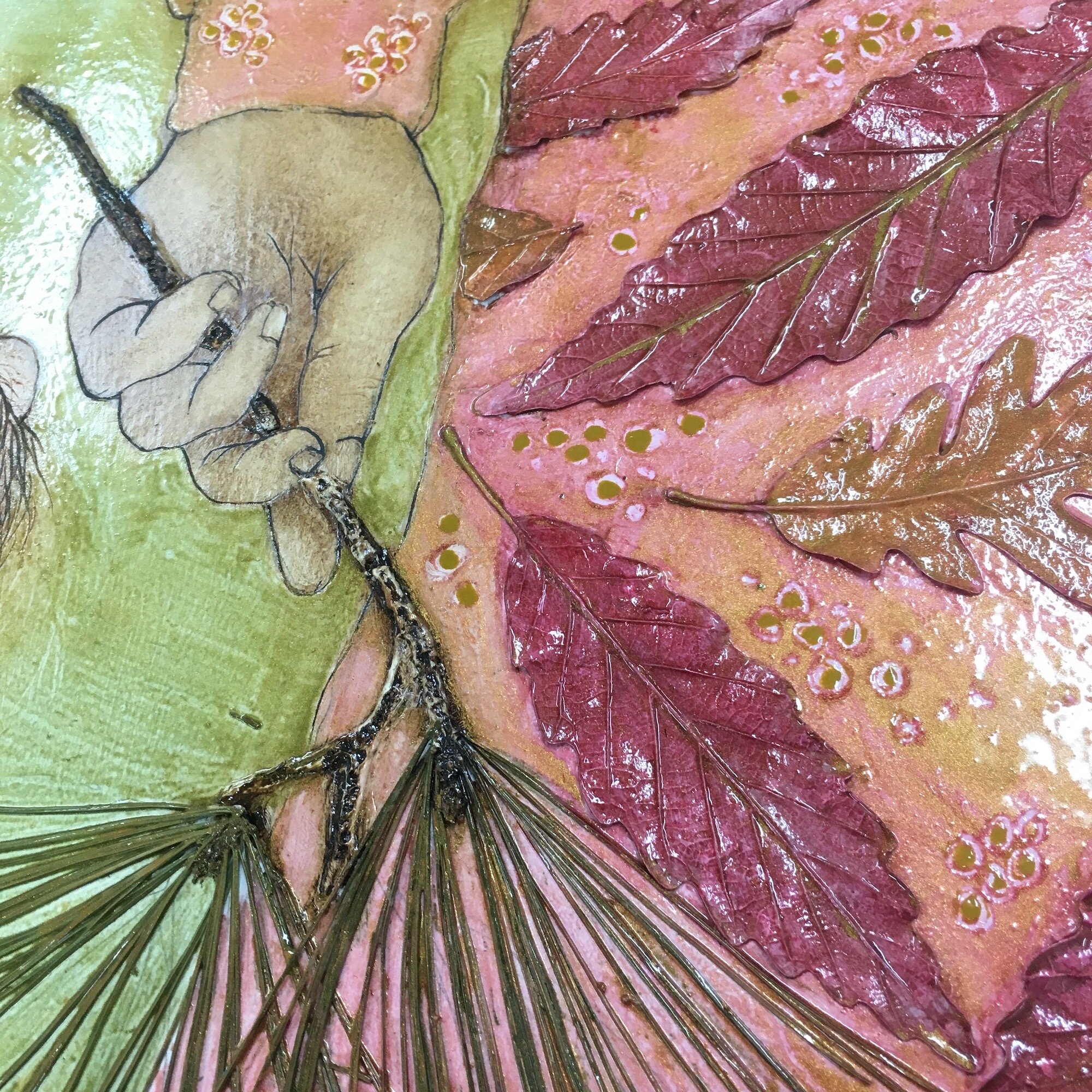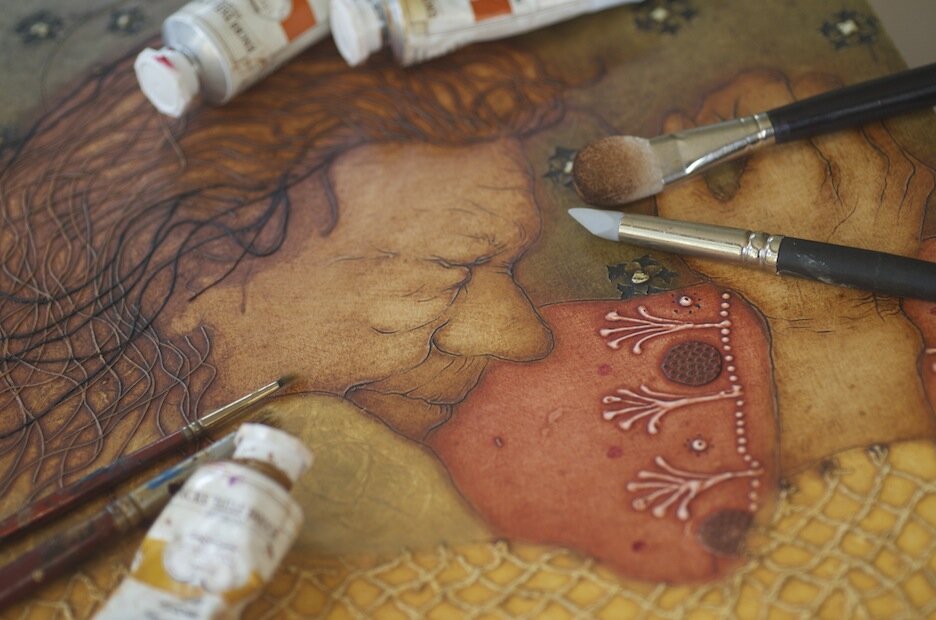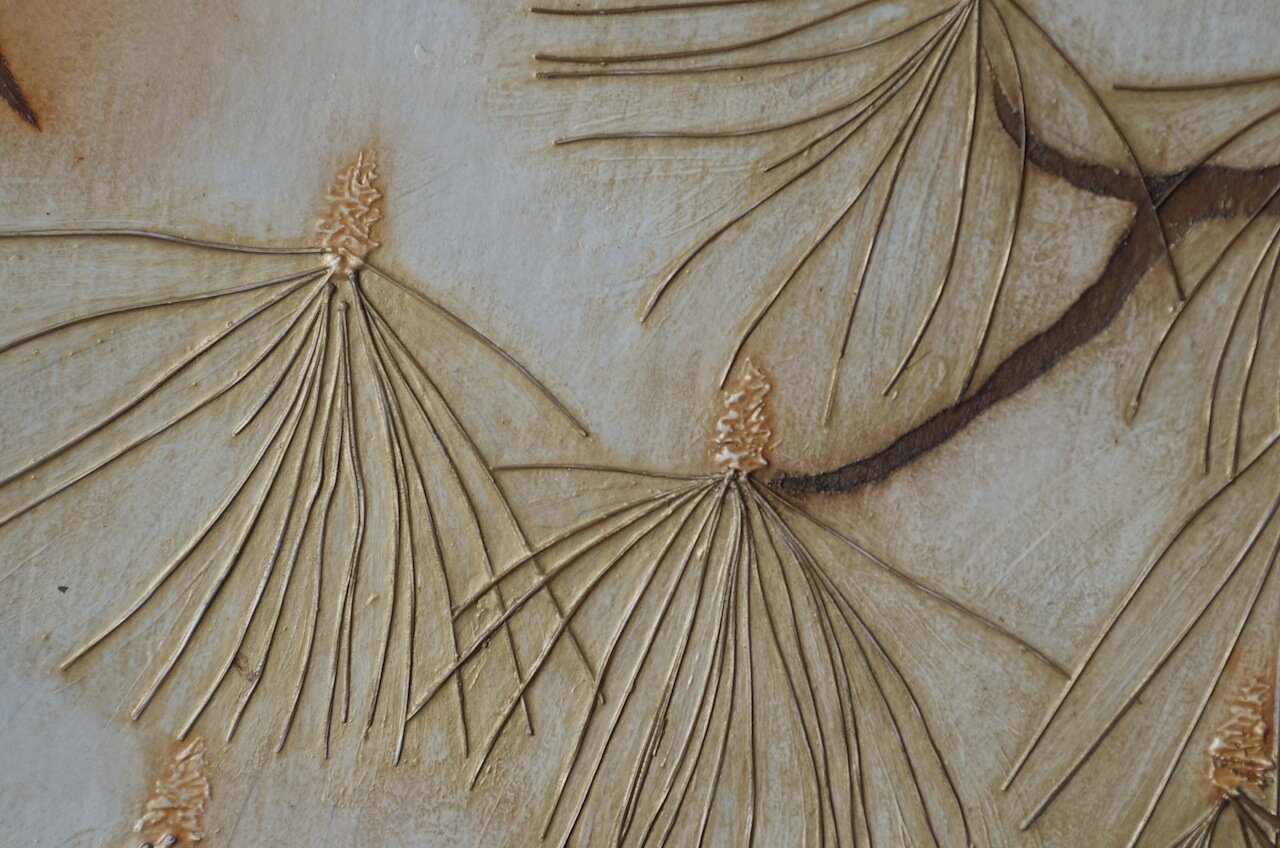
The word "collagraph" finds its roots in the French word "coller" or "to glue", as in "collage". After sketching the basic composition onto illustration board, I begin gluing down materials to create a texture that will catch the inks in its grooves and edges. Some of my favorites come from walks and hikes. I enjoy foraging for organic matter (leaves, seeds, grasses, pine needles, soil, sand, etc.), but also find fine textures in recycled "stuff" (foil, thread, netting from orange or avocado packaging, papers, lace, plastic bags, rubber bands, tapes, gesso, puffy paint, etc.). Practically anything can be manipulated and adhered to the board to later reveal an interesting pattern once it is inked.

I will also "draw" by cutting into the board itself, usually a technique saved for faces, hands and fine lined details. After the image is complete, a varnish coating is added to seal the board in order for the ink to "release" or "give up" to the paper. The plate is inked in the "a la poupee" style (referring to the doll or puppet-like little head of the ink pad). The inking is done in one sitting with all the colors using a variety of "puppets", brushes, paper or even my hands. When the inking is complete (and while the ink is still wet), it is sent through the press with a dampened piece of printmaking paper placed carefully on top.

I choose from a selection of fine art printmaking papers such as Rives BFK, Hahnemuhle Copperplate, Zerkall Nideggen, as well as Revere and Somerset, depending on the project. For over 20 years, I only used Charbonnel oil based etching inks, but now also enjoy Akua intaglio inks and liquid pigments.
As the paper and plate move through the press together, the paper is literally pressed down into all the small nooks and crannies of the plate, both drawing up the ink and embossing the paper.
One of the most intriguing aspects of printmaking is the uncertainty of the result (which, of course, can also be the most frustrating). It is sometimes hard to know exactly how the inks, the plate and the paper will interact. Many times there are lovely surprises in this unpredictable process.

These particular plates can only be inked fewer than 10 times, depending on the delicacy of the "stuff" on the plate. After many passes through the press, the fine lines begin to diminish and the three dimensional quality begins to deteriorate. The botanical plates will only survive a few passes, as their leaves and stems are simply too delicate for more.
Another appealing feature of this printmaking technique is that I am able to completely change the tone, both visual and, in turn, emotional, of the resulting print simply by inking the plate in a different palette.
There are times when the plate itself develops a beautiful patina with layers of ink residue.


